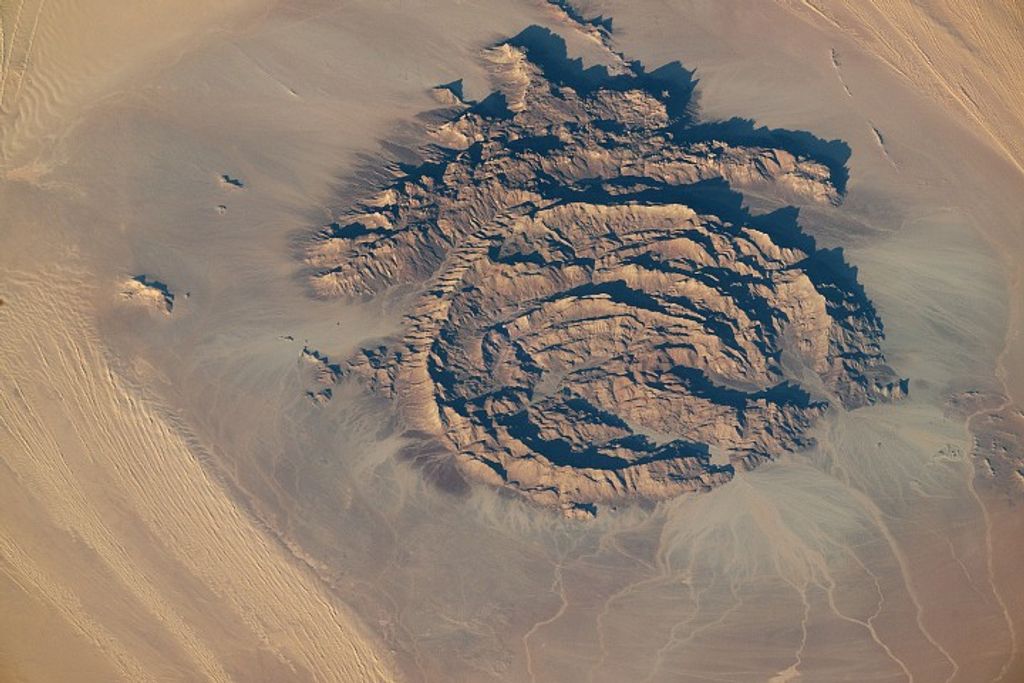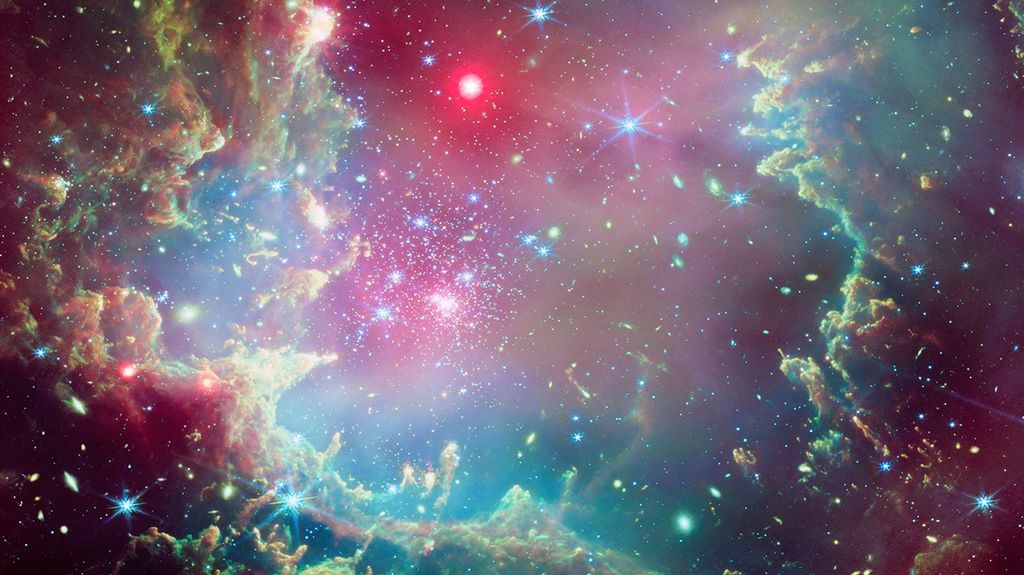Glow of Night
| PIA Number | PIA08261 |
|---|---|
| Language |
|
Soft light from Saturn lifts the veil of night from the moons Dione (lower left) and Rhea (upper right).
A scant crescent on each satellite marks the limit of the Sun's direct reach. The remaining light is reflected onto the moons by the Ringed Planet.
This view was acquired using an image compression scheme that results in minor artifacts being present -- on Rhea in particular. Rhea (1,528 kilometers, or 949 miles across, and pictured above) is somewhat bland in appearance at this image scale, although Dione's spectacular fractures stand out marvelously. Dione is 1,126 kilometers (700 miles) across.
North on both moons is rotated 45 degrees to the right.
The image was taken in visible light with the Cassini spacecraft narrow-angle camera on Aug. 11, 2006 at a distance of approximately 2.6 million kilometers (1.6 million miles) from Dione and 2.8 million kilometers (1.7 million miles) from Rhea. Image scale is 15 kilometers (10 miles) per pixel on Dione and 17 kilometers (11 miles) on Rhea.
The Cassini-Huygens mission is a cooperative project of NASA, the European Space Agency and the Italian Space Agency. The Jet Propulsion Laboratory, a division of the California Institute of Technology in Pasadena, manages the mission for NASA's Science Mission Directorate, Washington, D.C. The Cassini orbiter and its two onboard cameras were designed, developed and assembled at JPL. The imaging operations center is based at the Space Science Institute in Boulder, Colo.
For more information about the Cassini-Huygens mission visit http://saturn.jpl.nasa.gov . The Cassini imaging team homepage is at http://ciclops.org .
Credit: NASA/JPL/Space Science Institute






























